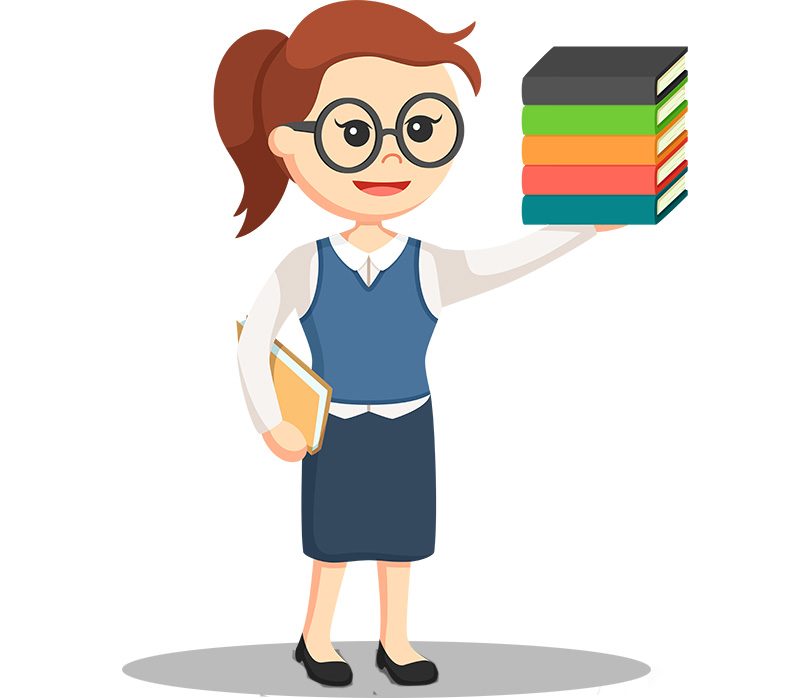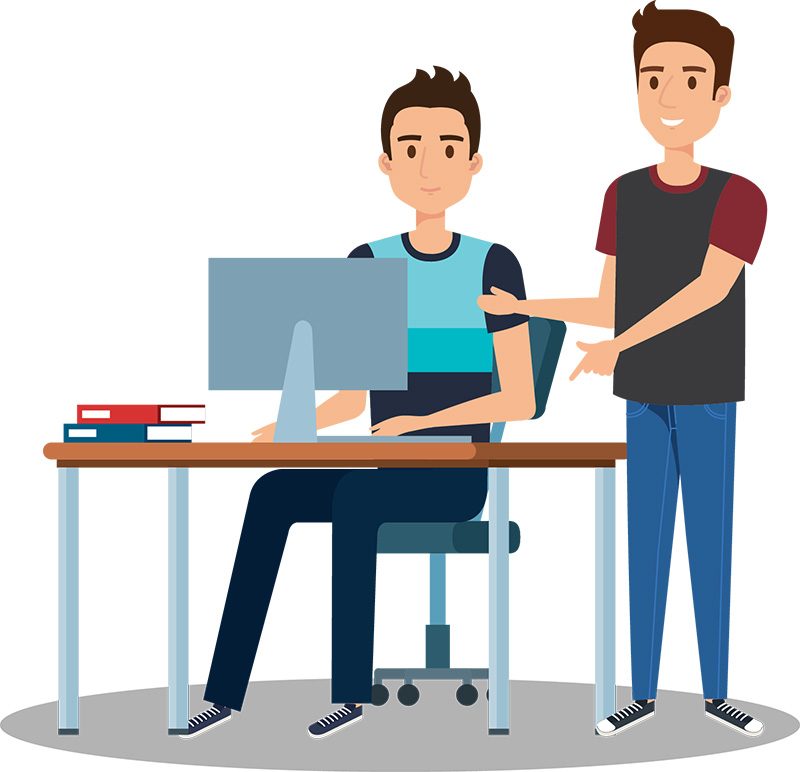The identity and role of the teacher have moved through the times with remarkable stability. These have nevertheless known through the ages some variations, including the three archetypes, which Philippe Meirieu describes in the UNESCO report – Education and the role of teachers in 2020. In this regard, he identified three models: the preacher, the teacher-librarian and the master companion. At the time of the digital revolution, the function of this social actor is being redefined. Here are a few lessons we can draw from going over these historical models.
The model of the preacher
In the West, it is the university professors who embody this model. They are highly recognized and legitimized for their knowledge, which bears the seal of “truth” and which they transmit through a lecture to an audience that must be all ears. The notion of hierarchy permeates this model, the professor having a superior, prestigious status, which makes him/her the one to listen, which one must follow by the book, and which grants the right to speak, or the chance to develop a reflection. Moreover, this teacher does not “teach” in front of any public, but to the cream of the students.

Strengths
- It has a human dimension, in the sense that the one who transmits knowledge also gives it meaning, puts it in context and places it in history.
- In the best case, it can actively challenge the learner: by prompting him to question himself, to quickly synthesize his thoughts, to have deep reflections and to experiment with what is called the state of flow – this mental state of immersion, full commitment, and satisfaction in achievement.
Weaknesses
- It can quickly become tedious, among other things, if the teacher is not an excellent and charismatic communicator.
- It requires excellent intrinsic motivation on the part of the learner.
- In its strict form, this authoritative teaching leaves the learner alone, without supervision.
- Rather than being emancipatory, it favors a kind of dependence: the captivating power of speech can move the learner from “captivation” to intellectual “captivity.”
The teacher-librarian model
Unlike the preacher model, the one of the teacher-librarian does not possess all the knowledge, any more than he teaches the “truth.” The teachers’ mission is instead to help, to guide the learners to find themselves in their library, to which they give them full access. Thus, rather than passing on knowledge themselves, the teachers provide, on request, information on how to find it and the most useful resources in this regard. It helps skim and classify documents according to their complexity, relevance, and completeness. With them, the learner is free to take the time to think, to explore. This model refers to a practice dear to the Anglo-Saxon culture, the “free examination,” which recommends that everyone can read the original texts in particular to develop critical thinking about them.
 Strengths
Strengths
- It is democratic, not hierarchical, because it aims to make knowledge accessible to all.
- It is in perfect alignment with the challenges of our time related to the overabundance of information and the need to learn to separate the wheat from the chaff.
- It is also current because it encourages intellectual autonomy and initiative.
- It values the importance of taking the time to think, a necessity with which we must reconnect in this era of an overabundance of information and distractions.
Weaknesses
- Although it allows the learner to have direct access to various sources of knowledge, it nevertheless installs a filter of subjectivity to access it, the intervention of each teacher-librarian being tinged by their values, their personality, training, experiences, etc.
- Its intervention does not have the “human” character of that of the teacher (model of the preacher), which can give meaning to knowledge and put it in context.
- Its primary objective is to make knowledge accessible; therefore, it entails the risk of leading the learner towards knowledge that has been over-simplified, making it difficult to make sense of, and to link between different notions.
- It can lead the learner to a form of intellectual laziness.
The model of the master companion
This model was born to counterbalance the shortcomings of the teacher-librarian one. Taking place in the “classroom-workshop,” the learning of know-how passes here through a privileged relationship between the learner and the master companion. Although this report implies a certain familiarity between the teacher and the learner, it is not a relation of equals; the master companions remain the ones who “knows” and they can be authoritarian. By imitation and emulation, the learner acquires autonomy and skills by being guided by the master in the execution of a result that poses particular challenges.
 Strengths
Strengths
- It seems straight out of the so-called “active” pedagogy, prevalent today, put forward among others in the flipped classroom. However, it comes from the tradition of companionship which counts not only several centuries, but which has had its course in more than one civilization – the term “companionship” however comes from the best-known model, the French one born in the Middle Ages.
- The relationship of proximity that it implies allows it, without a doubt, to be the one of the three models of teachers who is most likely to lead to the rise of emotions favorable to learning (see The importance of emotions in learning).
- It is akin to coaching, a model that probably has a lot of future since it puts forward the teacher’s human pedagogical qualities, those that the computer can not yet match. It is, in fact, complementary to teaching tasks that can be given to the machines (see Digital Revolution: 4 Challenges for Education).
- It’s also similar to mentoring, a practice that is gaining more and more ground due to the labor market conditions in the years to come (see Do Your Employees Know How to Learn? and Business Transfers in Quebec: a Major Challenge).
- Both the context in which it takes place and the type of interaction it allows between the learner and the teacher, make this model of learning both formal and informal. It, therefore, makes the best of both approaches (see Informal Learning 101).
- Since it revolves around experimentation, it allows the learner to make mistakes (!), a condition that neuroscience has shown to be important in the learning process (see Neuroscience: Learning in 4 steps).
- Focused on solving concrete problems, it is entirely appropriate for adult learners – a group that will continue to grow in importance, since we now tend to learn throughout our lives (see The adult: a distinct learner).
Weaknesses
- It can be challenging to put into practice as is. The idea that each learner or small group of learners have their own teacher and that they can practice at will (giving them all the time and material resources they need) to meet or exceed their teacher’s level, is too expensive for our education system, counterproductive for our capitalist system, and unsustainable for our eco-responsible imperatives.
- In the original version of this model, the learner is a worker who learns his trade by practicing it, which means that his production must quickly satisfy the customers. There is, therefore, a contradiction between the pedagogical approach that this model promotes and the requirements of competence and productivity inherent in the status of the modern worker.
…
For an open model
Based on the analysis of Philippe Meirieu, we tried to see what would be relevant to preserve or, on the contrary, to leave aside from these historical models of the “good teacher” for the years to come. Note that since these models have succeeded in forming generations of learners, it seems logical to take them into account while trying to redefine the profession. And even if the arrival of digital in the sphere of education promises to modify it in depth – like the rest of the society – learners remain human beings … and history has also shown us that human nature does not change so quickly.
Let’s leave the last word to Philippe Meirieu himself, who advocates the adoption of an open model.
“Thus, the “master companion” is no more perfect than the preacher or librarian. But each of them, we see, has specific qualities: the word has a power of “attraction” and clarification; the book tames the mind and trains critical thinking; the accompanied gesture leads to perseverance and the requirement of quality. Therefore, in a new effort, we must try to imagine an open model of teaching, combining in an original dynamic these three aspects and which will enable us to overcome the quarrels of the past to face the challenges of the future.”







Leave A Comment